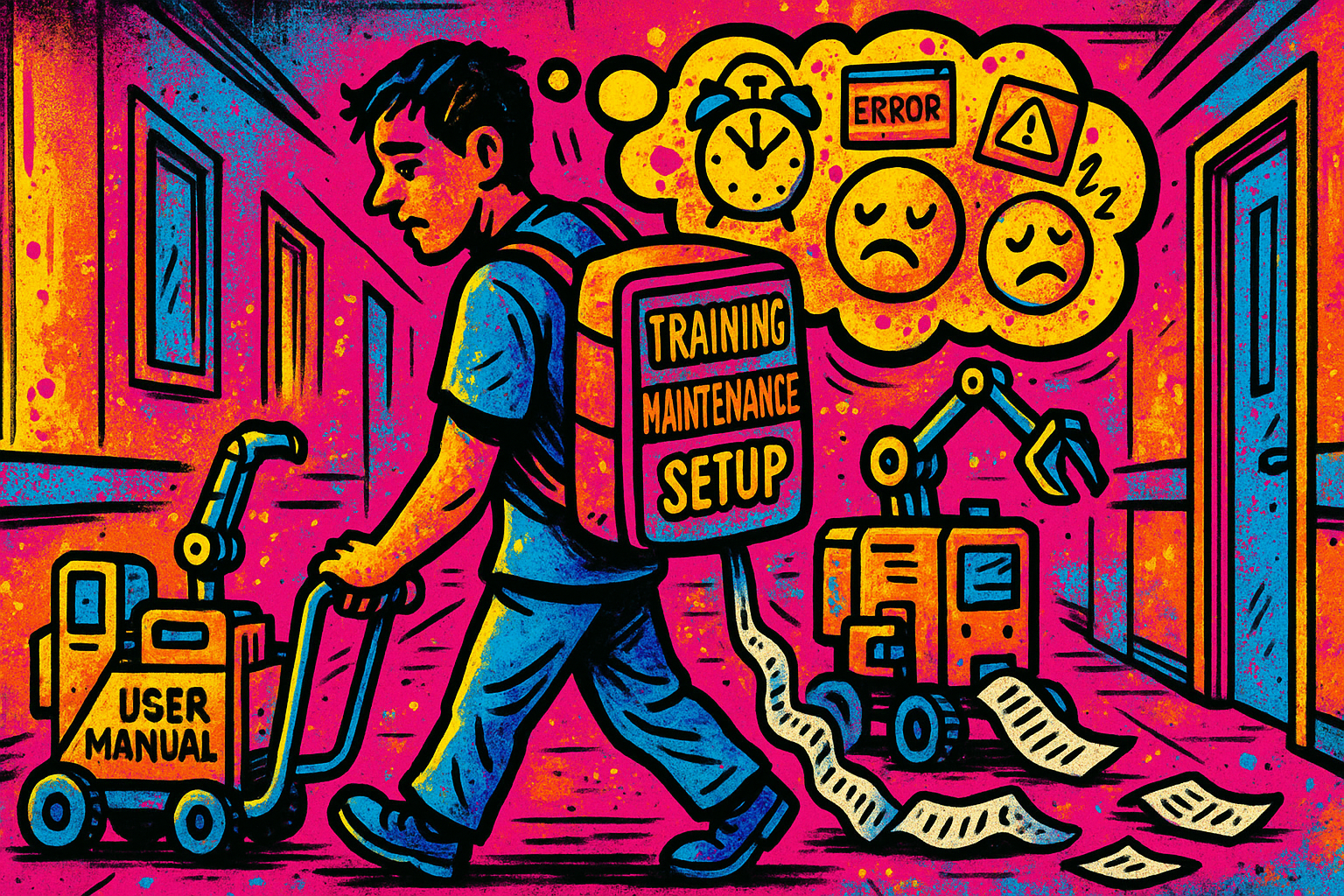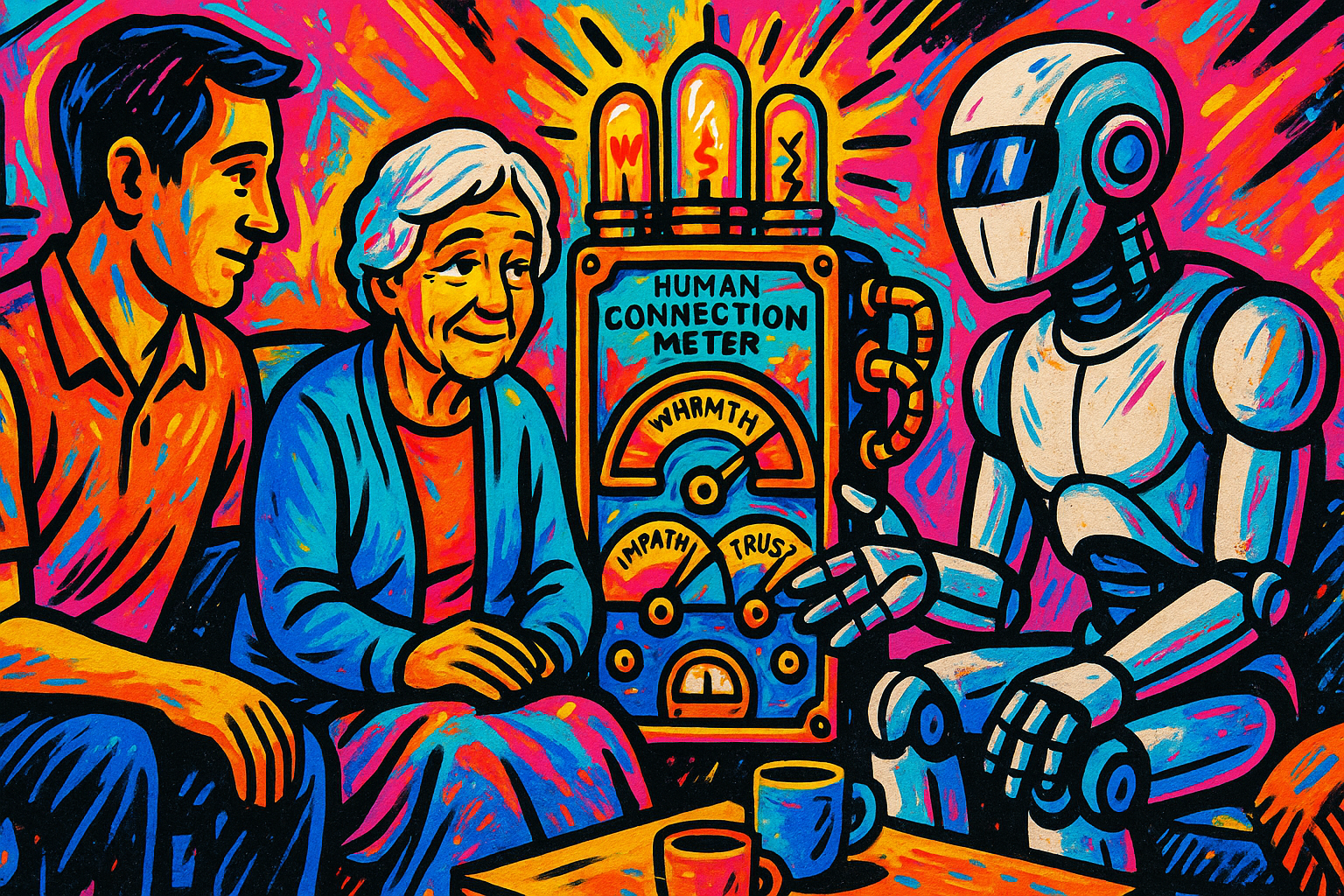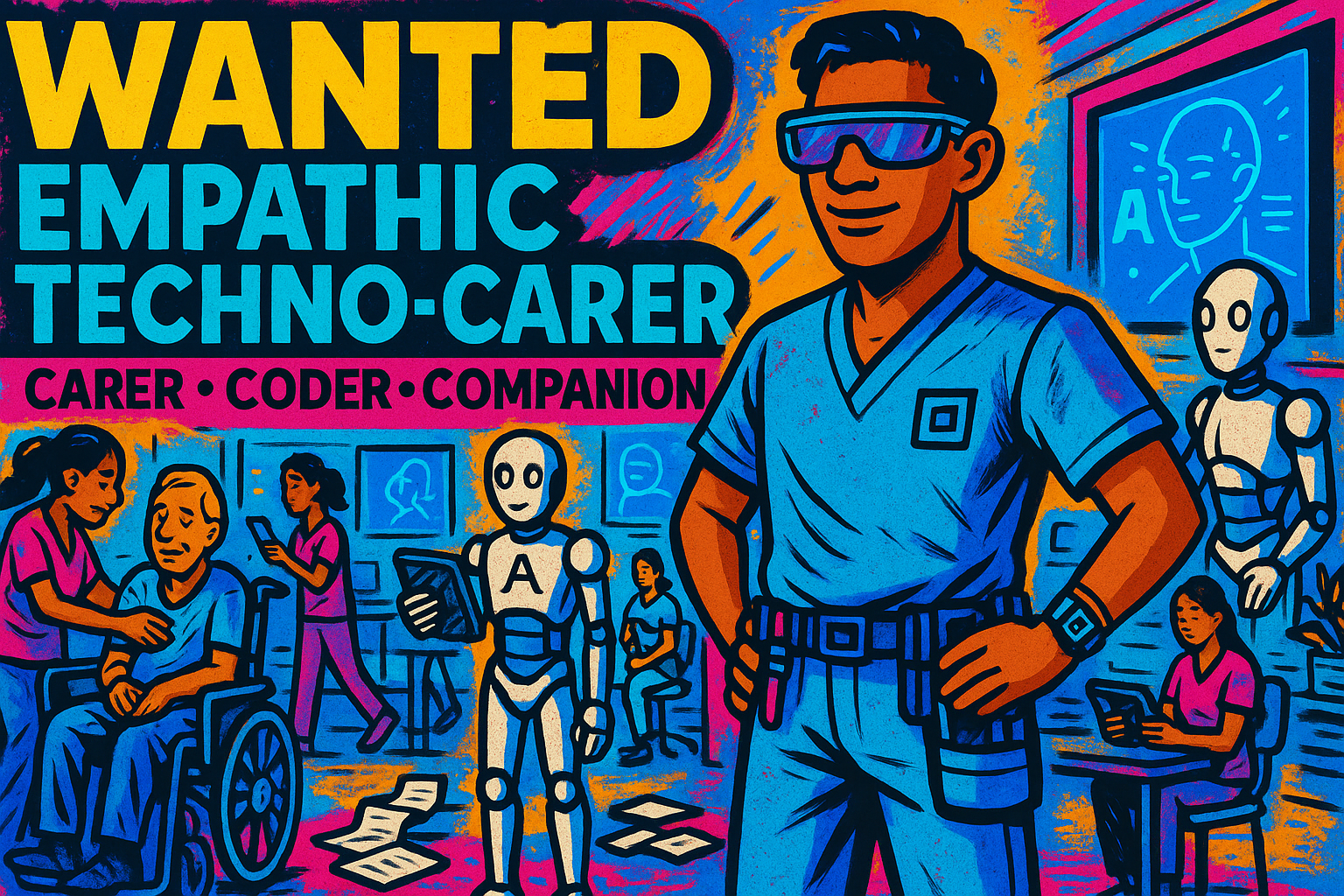This week I was fortunate to be invited to present at the European Social Services Conference, if you’ve never been I’d recommend for a broader perspective on shared challenges and different approaches. I shared the stage with Pascal Bijleveld, CEO of ATScale bringing assistive technology to low- and middle-income countries and Silvia Rossi, Professor at Naples University who’s doing incredible research on the use of conversational robots to calm anxious children eg for vaccine injections. I spoke about robots in social care, here I cover the content and some reflections.
The care sector is grappling with several concurrent challenges. The progress in public health alongside the use of science and technology in healthcare means there are increasingly more people living longer. Larger proportions of the population need more care, at the same time the proportion of the population no longer working increases bringing lower taxes revenue for public services. The care needs also get more complex with people living with multiple long-term conditions which in turn increases the cost of care. Then there are the pressures facing the caring workforce which itself is ageing too and there’s insufficient care staff to meet the care needs of the population. These challenges are not unique to the UK but face many countries. It’s against this backdrop of challenges in which AI and robotics is being proposed as a solution.

Robots in the present day
The research, development and testing of robots for care has been occurring for quite some time. While they continue to show promise the technology limitations, cost and unresolved ethical issues mean they remain used in niche applications.
Existing robot use includes:
· Conversational robots: These robots engage in simple conversations, remind individuals to take medication, and play music. They are intended to supplement human contact between carer visits. Research indicates that users of these robots experience improved mental health and reduced loneliness. However, issues with the design of the robots' movements and the scripted dialogue can create a superficial interaction.
· Telepresence robots: Combining mobility with a large screen and camera, these robots facilitate remote contact with friends and family. They help alleviate loneliness but can face connectivity and mobility challenges depending on the living environment.
· Assistive robots: These robots assist with physical tasks, benefiting both individuals and carers. Examples include bear-shaped robots for lifting, robotic hoists, robotic arms for feeding or dressing, and mobile robots for carrying items or assisting with walking. While they reduce the risk of injury and promote independence, they require time, skill, and familiarity to set up, which can be burdensome.
· Robotic pets: Designed to look like animals, these robots reduce loneliness and agitation, especially in individuals with dementia. They can be costly, but cheaper alternatives are being developed. Sometimes, a plush toy can have similar benefits. Staff training is necessary to implement, use, clean, and maintain these robotic pets, which can divert time from direct care.

GenAI and Agentic AI to the rescue?
Many robots developed and tested to date were created before the recent advancements in generative and agentic AI. These are software-based tools and so require integration into physical robotics for increased real-world use and impact. Generative AI could vastly improve conversational robots, making them more engaging and capable of fluid, unscripted interactions. We’ve already seen the personality and conversational qualities of generative AI technology. These robots could offer companionship and even conduct some forms of therapy to support mental health and cognitive function, assuming they are able to be programmed to avoid straying into harmful or dangerous topics. Agentic AI (which is intended to create autonomous systems) could improve assistive robots to work more effectively around carers and respond to the preferences of individuals by learning and adapting to routines and detecting the physical layout to move around.
Will the new AI capabilities in turn accelerate the development of robotics and overcome the limitations mentioned above? Afterall there are often impressive demonstrations of robots, such as robot marathons, back flips and navigating obstacle courses. Unfortunately, these are often human controlled (tele-operator) or have highly tailored programming. These demonstrations also don’t show the limitations of robotics in their dexterity and tactile strength – the things we find easy are still very hard for technology to replicate. Google has demonstrated how new AI approaches could also be used to more rapidly create training data for robotics which in turn could speed up their development. But, even then Google are still depending upon tele-operating the robot so the limitations persist.
The technological limitations persist as do the ethical issues. Robotics in care present unique ethical and cultural questions: When is it ok to replace human contact? How do we ensure an individual has meaningful choice in how robots are used? If a robot is used for therapy and assistance does it infringe the persons privacy? And does the use of robots improve the quality of life for the person meeting their preferences for independence and dignity?
There are no easy answers to these questions, it’s likely many will depend on the individual preferences and these preferences will likely change with time as technology advances and the use of robots increases.
Ultimately, the big question for governments and care providers is whether robots can address the shortage of carers and the increasing care needs. The evidence so far is not promising. Robots still require staff for implementation and maintenance, necessitating training and education. It asks more of staff in a time of high pressure. This raises questions about the future of the caring profession. Will it become more of a highly trained, technically competent workforce combining care with technology commanding tech sector comparable salaries? Additionally, the cost of robots must be considered – after all they’re not cheap but scale could bring down costs. So, we need to ascertain with robotics and more technically trained carers is the care capability significantly amplified? While it all points to more costs there’s the potential for technology to increase dignity and independence of the individual which shouldn’t be ignored.
Robotics remains an exciting and developing technology area, the effectiveness of their use is still very limited compared to the expectations and aspirations. AI developments hold promise in expanding the capabilities of robotics but there are also hard engineering problems that need solving or designing around. I suspect we’re unlikely to see general purpose robots in care settings for quite some time. However, in the near term we could see many more narrow purpose robots designed around specific use cases in the near future. It’s essential to prepare carers and engage with individuals to ensure that care meets their needs and improves quality of life, independence and dignity.
You made it to the end!
Hopefully that means you enjoyed this post, if so please share with others and subscribe to receive posts directly via email.
Get in touch via Bluesky or LinkedIn.
Transparency on AI use: GenAI tools have been used to help draft and edit this publication and create the images. But all content, including validation, has been by the author.

